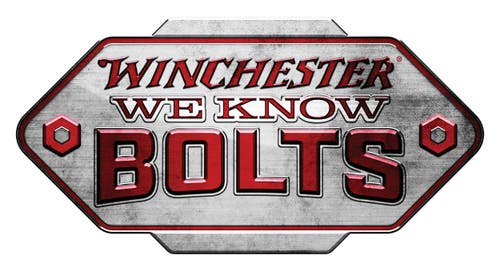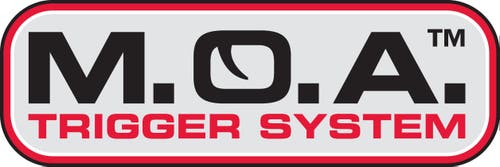XPR Episode 1 - Inside the XPR: It's all a matter of leverage.
XPR Episode 1 - Inside the XPR: It's all a matter of leverage.
The XPR’s three-lever M.O.A. Trigger System is the same design that’s found in the latest versions of the legendary Winchester Model 70 – known around the globe for decades as “The Rifleman’s Rifle.”
M.O.A. stands for Minute of Angle: And M.O.A. or better is the standard for measuring accuracy among today's serious long range shooters. The XPR's M.O.A. trigger system is a key contributor to it's exceptional accuracy. Read more for a detailed explanation why.
The XPR rifle’s M.O.A trigger starts with a trigger housing and all internal components constructed from polished and hardened carbon steel. Many of these trigger parts get a blued finish for added durability and corrosion resistance. The trigger sear and actuator have a nickel Teflon™ coating for reduced friction and added wear resistance. But that’s only part of what makes the trigger break so clean.
It’s the very nature of the XPR’s three-lever M.O.A. Trigger System design that makes it so unique. It works on the simple principle of the pivoting lever. Pictured here are the trigger piece (A), actuator (B), and sear (C).
The M.O.A.’s trigger piece also offers a wide, smooth face to better distribute finger pressure for a lighter, more sensitive feel. Because of its geometry and the 2:1 mechanical advantage, the trigger piece (where your finger makes contact) travels only half the distance (1X) of the actuator (2X), as you can see here.
Since this distance is cut in half, the perception of creep and overtravel are virtually eliminated. This means that your “feel” for the XPR’s trigger is greatly enhanced, and thus your effective accuracy, both in the field and off the bench is improved.
So what does all this mean in real world terms?
ZERO TAKE-UP
ZERO TAKE-UP
Take-up is the distance the trigger piece travels prior to the sear moving toward release and the shooter actually feeling resistance. The XPR’s M.O.A. Trigger System uses a spring to eliminate take-up by keeping the trigger piece in constant contact with the actuator. Unlike many competitors’ designs, the unique geometry of the M.O.A. pre-loads the entire trigger system to bias out normal manufacturing tolerances.
ZERO CREEP
ZERO CREEP
Creep is the perceptible movement of the trigger prior to the release of the firing pin and has a negative influence on accuracy, causing inconsistency and uncertainty during the pull of the trigger. Creep contributes to jerking the trigger, thus adding to movement of the gun during firing. The 2:1 mechanical advantage created by this
unique design geometry has virtually eliminated creep in the XPR rifle’s M.O.A. Trigger.
ZERO OVERTRAVEL
ZERO OVERTRAVEL
Overtravel is the rearward movement of the trigger after the firing pin has been released. It can actually jar the gun away from its intended point of aim and is very distracting to the shooter. The XPR adjustable M.O.A. Trigger System is set at the factory for a crisp break at about 3-1/2 pounds with no perceptible overtravel. When the sear drops, the trigger stops. Where you aim is where you shoot.
As you can see, the XPR’s M.O.A. Trigger System is head-and-shoulders above those found in most “run-of-the-mill” budget bolt-actions. But that’s not all about the XPR that sets the bar higher against all those “me-too” rifles.
In our next installment, we’ll look into the XPR’s high precision button-rifled barrel and see how this contributes to both accuracy and long life.
Read the intro and the entire 5-part series.
Read the intro and the entire 5-part series.
Copyright Winchester Repeating Arms, 2017. Written by WRA staff writer Scott Engen. Photos copyright by Winchester Repeating Arms, or Olin company archives, in the public domain or as indicated in the caption.






